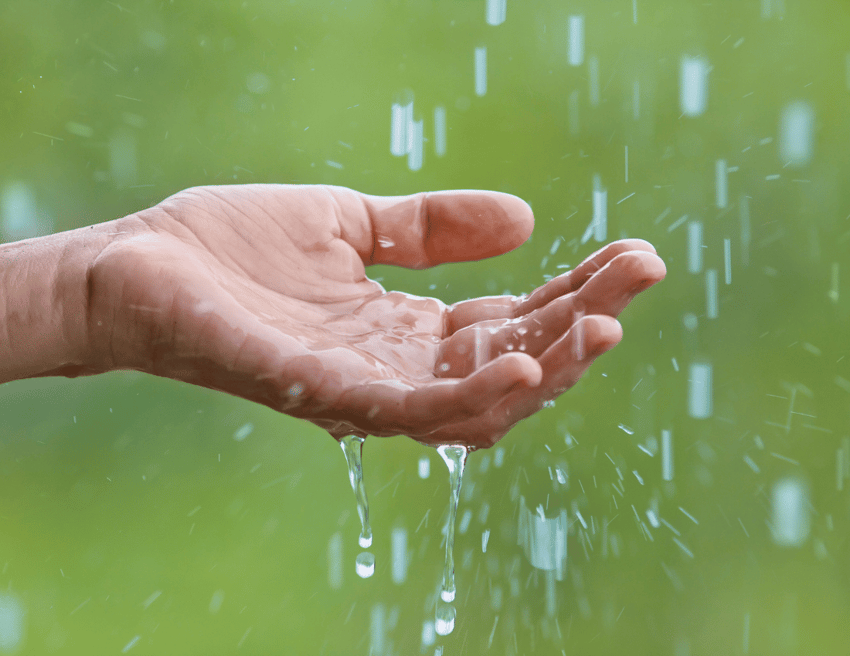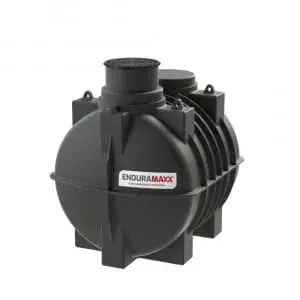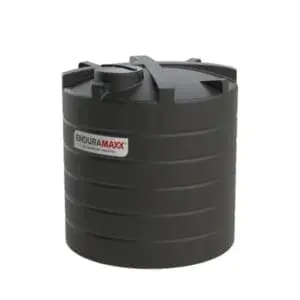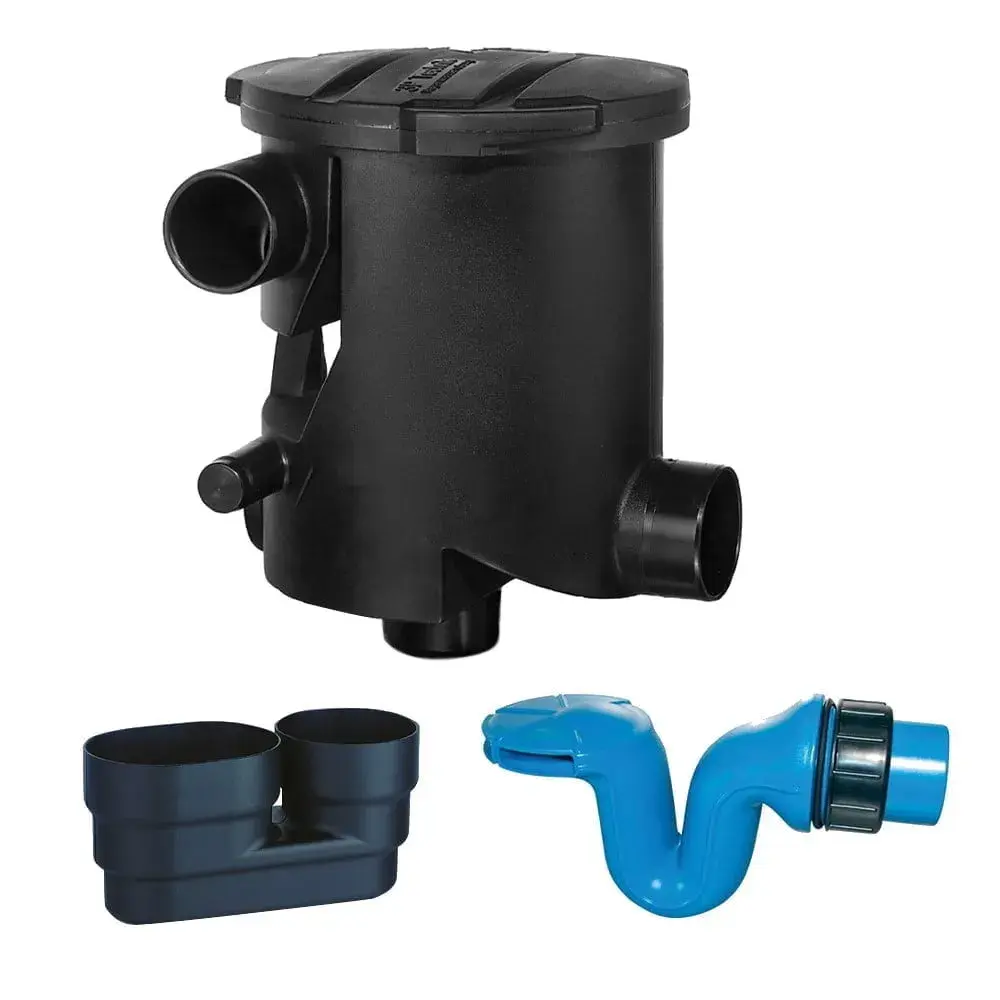
Water is arguably the most important natural resource on our planet. Without it, agriculture as we know it simply wouldn't be possible. Water scarcity, however, is a growing concern in the UK, especially during the summer months, and it's becoming increasingly important to find ways to conserve our precious supply. This is where rainwater harvesting comes into play.
In this article, we're going to look at agricultural rainwater harvesting, exploring how it works and why it matters. By the end of the article, you'll have a much better understanding of this essential process.
What Is Rainwater Harvesting?
Rainwater harvesting is the process of collecting, storing, and distributing rainwater for later use. Rainwater is collected from roofs, barns, gutters, livestock sheds, and other surfaces, and is directed to a storage tank or reservoir. The collected water can be used for various purposes, including irrigation, drinking for livestock, cleaning plant and machinery, and even non-potable domestic use.
How Rainwater Systems Work
Rainwater harvesting systems typically include a catchment area, a conveyance system, a storage tank, a set of filters or attached sanitisation system, and a distribution network. The catchment area is the surface where rainwater is collected, such as a roof or a paved area. The conveyance system directs rainwater to the storage tank, which can be above or below ground. The distribution system distributes the stored water to different areas of the farm and applications where it is needed.
The catchment area and conveyance system are essential components of the rainwater harvesting system. The catchment area should be kept free of contaminants, such as bird droppings, agricultural chemicals, or debris, to avoid contamination of the collected water. The conveyance system should be designed to capture as much water as possible and direct it to the storage tank, and it is helpful to include adequate filters to avoid blockages and overspill.
Why Is Rainwater Harvesting Important In Agriculture?
Rainwater harvesting is an essential practice in agriculture, especially in areas with seasonal water scarcity. In many parts of the country, farmers rely on rainwater to partially irrigate their crops, and it’s essential to have a reliable backup water source to ensure crop yield and quality when there are restrictions placed on mains water access. Rainwater harvesting allows farmers to collect and store rainwater during the winter, when there is usually plenty of rain in the UK, and use it for irrigation during the summer.
Rainwater harvesting also reduces the demand on open groundwater resources such as lakes and rivers, which are often overexploited in agricultural areas at times of peak demand. Groundwater resources are limited, and their depletion can have severe environmental and economic consequences. Rainwater harvesting helps farmers to conserve groundwater resources and maintain sustainable agricultural practices.
The Environmental Sustainability Benefits Of Rainwater Harvesting
Rainwater harvesting has numerous sustainability benefits:
-
It reduces reliance on public potable mains water supplies, which can be expensive and have environmental impacts if overused.
-
It helps to conserve water resources and reduce the potential for water shortages in times of drought.
-
It also reduces runoff and soil erosion by capturing rainwater from the fields before it enters waterways.
-
Rainwater harvesting also promotes sustainable living practices by reducing carbon emissions associated with mains water supply and distribution, promoting self-sufficiency and reducing reliance on external resources.
Rainwater Harvesting And Storage Systems From Enduramaxx
Please get in touch today to find out more about our rainwater harvesting systems and retention systems for arable and livestock farms. We offer a variety of water conservation solutions that can help reduce your farm’s environmental impact while saving money on utility bills.
Image Source: Canva
Posts By Topics
- Blog (303)
- Chemical Storage Tanks (118)
- Chemical Dosing Tanks (114)
- Chemical Tanks (114)
- Water Tanks (58)
- Rainwater Harvesting Tanks (43)
- Vertical Rainwater Tanks (31)
- Vertical Storage Tanks (31)
- Cone Bottom Tanks (19)
- Conical Cone Tanks (18)
- Rainwater Harvesting (17)
- Water Bowsers (15)
- Horizontal Tanks (14)
- Potable Water Tanks (13)
- Farming (9)
- Case Studies (8)
- Industrial Storage Tanks (7)
- Liquid Fertilser Storage Tanks (6)
- WRAS Approved Potable Tanks (6)
- Wine and Beer Production (6)
- Horizontal Transport Tanks (5)
- Microbrewery (5)
- Rainwater (5)
- Category 5 Break Tanks (4)
- Cider Production (4)
- Mixer Tanks (4)
- Molasses Tanks (4)
- Polyethylene tanks (4)
- Rainwater Filter Kits (4)
- SPECIALIST & BESPOKE TANKS (4)
- Bunded Tanks (3)
- Slimline Tanks (3)
- WRAS Approved (3)
- Clarification Tanks (2)
- Crosslinked Polymer Tanks (XLPE) (2)
- Fertiliser Tanks (2)
- Sump Tanks (2)
- Tank Installation (2)
- Water Butt (2)
- underground water tanks (2)
- ACCESSORIES & FITTINGS (1)
- ATV & UTV SPRAYING UNITS (1)
- Above Ground Effluent Tanks (1)
- Bespoke Tank Frames (1)
- Category 5 Turret (1)
- Caustic Soda Tanks (1)
- Closed Top Bunded Tanks (1)
- Craft beer (1)
- Effluent Tanks (1)
- Enduramaxx (1)
- Ferric Chloride Tanks (1)
- Fire Safety Regulations (1)
- Fire Sprinkler Water Storage Tanks (1)
- Industrial Water Tank (1)
- Open Top Bunded Tanks (1)
- Open Top Cone Tanks (1)
- Open Top Vertical Tanks (1)
- Polyethylene Potable Water Tanks (1)
- Polyvinylidene Fluoride (PVDF) Tanks (1)
- Polyvinylidene Fluoride Tanks (PVDF) (1)
- Pressure Washers (1)
- Pro Series Spot Sprayers (1)
- RWH (1)
- Sodium Hydroxide Storage Tanks (1)
- Sprayer Fill-up Tanks (1)
- Uncategorised (1)
- liquid fertiliser tank (1)
Sign up to the newsletter
Amber
Related Posts
Benefits of Linking Water Tanks: Flexibility, Water Security, Cost Savings
Benefits of linking water tanks – storing rainwater harvestable water from the roof of your house,...
Our Truck Water Tanks Baffled For Moving Water
Enduramaxx manufactures a range of plastic truck water tanks from 400 litres to 13,000 litres. Our...
How Often Should Water Tanks Be Cleaned?
Cleaning your water tanks is important for a number of reasons. A neglected water tank can put your...
Related Products
From £1,080.00 inc. VAT
£900.00 exc. VAT
From £1,344.00 inc. VAT
£1,120.00 exc. VAT
From £768.00 inc. VAT
£640.00 exc. VAT
£480.00 inc. VAT
£400.00 exc. VAT





